Capturing Somatosensory Behaviour
Somatosensation is the body's ability to perceive sensory information from the skin, muscles, and joints, including touch, pressure, temperature, and pain. As part of my PhD research, I developed a novel technology to capture somatosensory-driven behaviours in mice as they move freely through their environment.
This project highlights selected illustrations and data visualisations I designed to showcase the technology and to quantify the exploratory behaviour of mice.
Read the paper in full: Precision Cutaneous Stimulation in Freely Moving Mice
Technology Design

The technology uses a camera positioned beneath a glass platform to capture the movements of the mice as they explore environments, such as a circular arena or a maze, placed on top of the glass platform.
Quantification of Behaviour in a Circular Arena
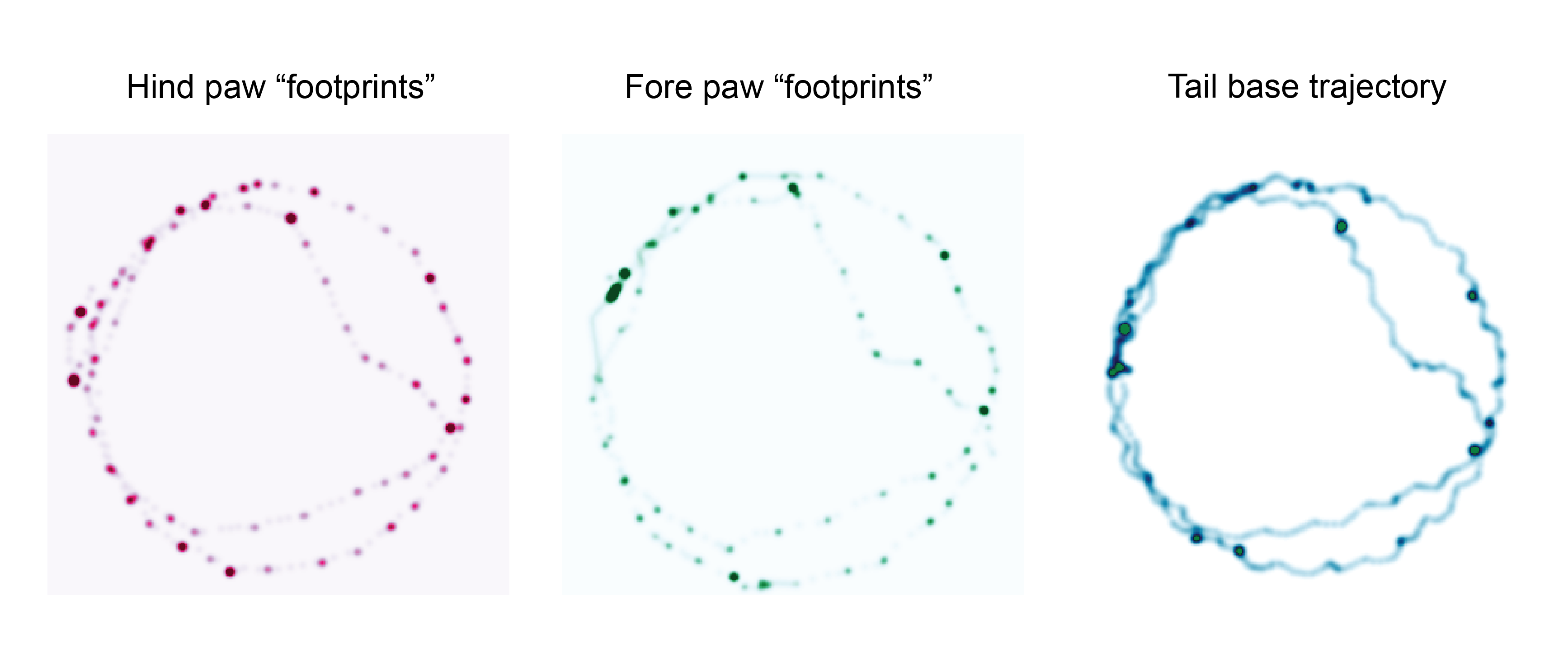
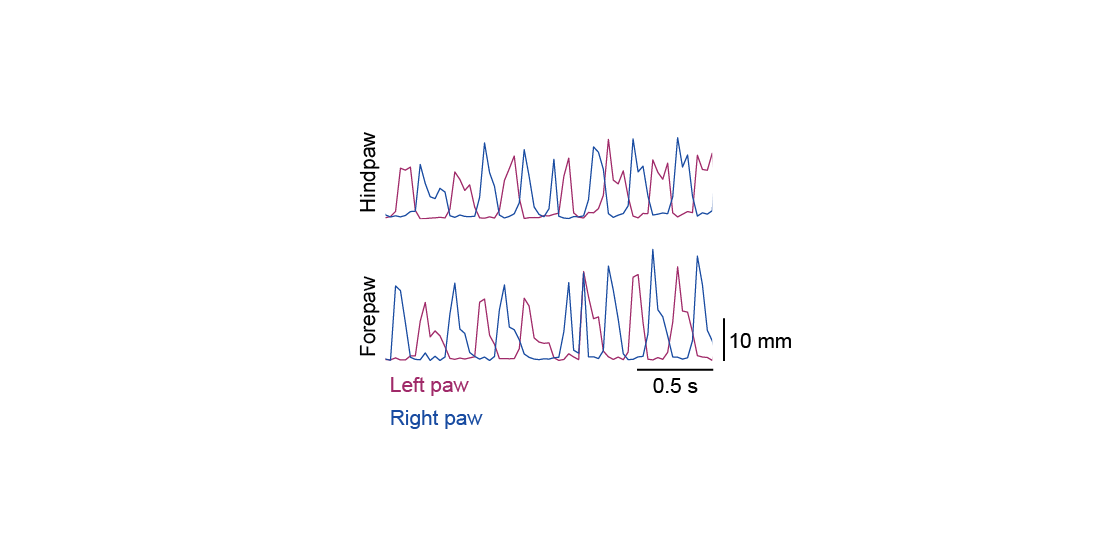
I visualised mouse footprints as they explored a circular arena using 2D histograms of paw coordinates. These footprints represent moments in the gait cycle when the paws remain stationary. The histogram on the right captures the continuous motion of the mouse’s tail in comparison to the footprints of the paws.
Visualisation of the movement of left and right paw alternating in 2D space while the mouse walks.
This visualisation reconstructs a mouse's movement as it explores. The left hind paw's future positions appear ahead of the mouse, while past positions fade into darker shades of blue. The body's orientation is shown at four time points using orange rhombi, connecting the snout, fore paws, and base of the tail.
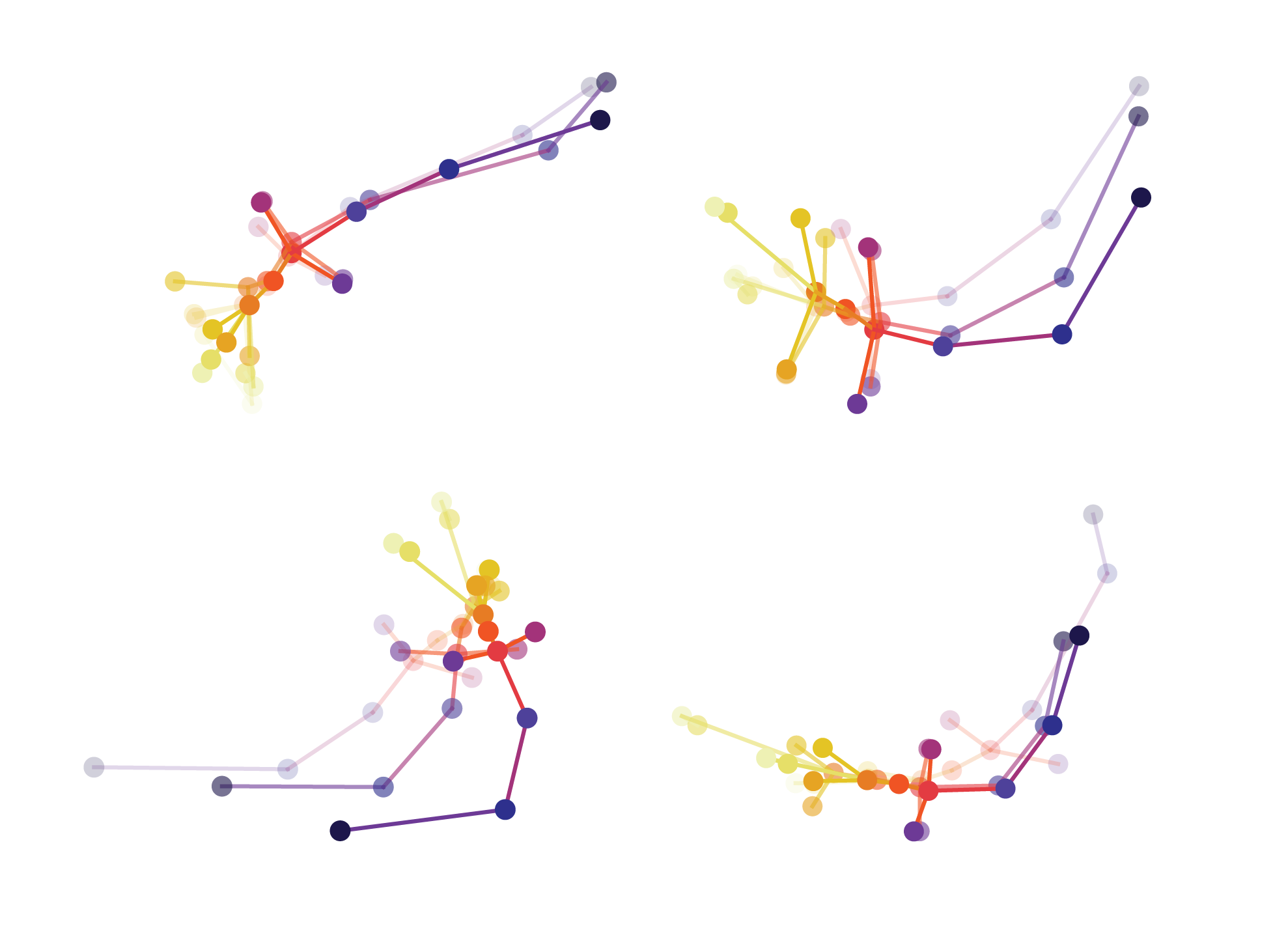
Reconstructions of the mouse 'skeleton' when the mouse is turning in the circular arena.
Quantification of Behaviour in a Maze
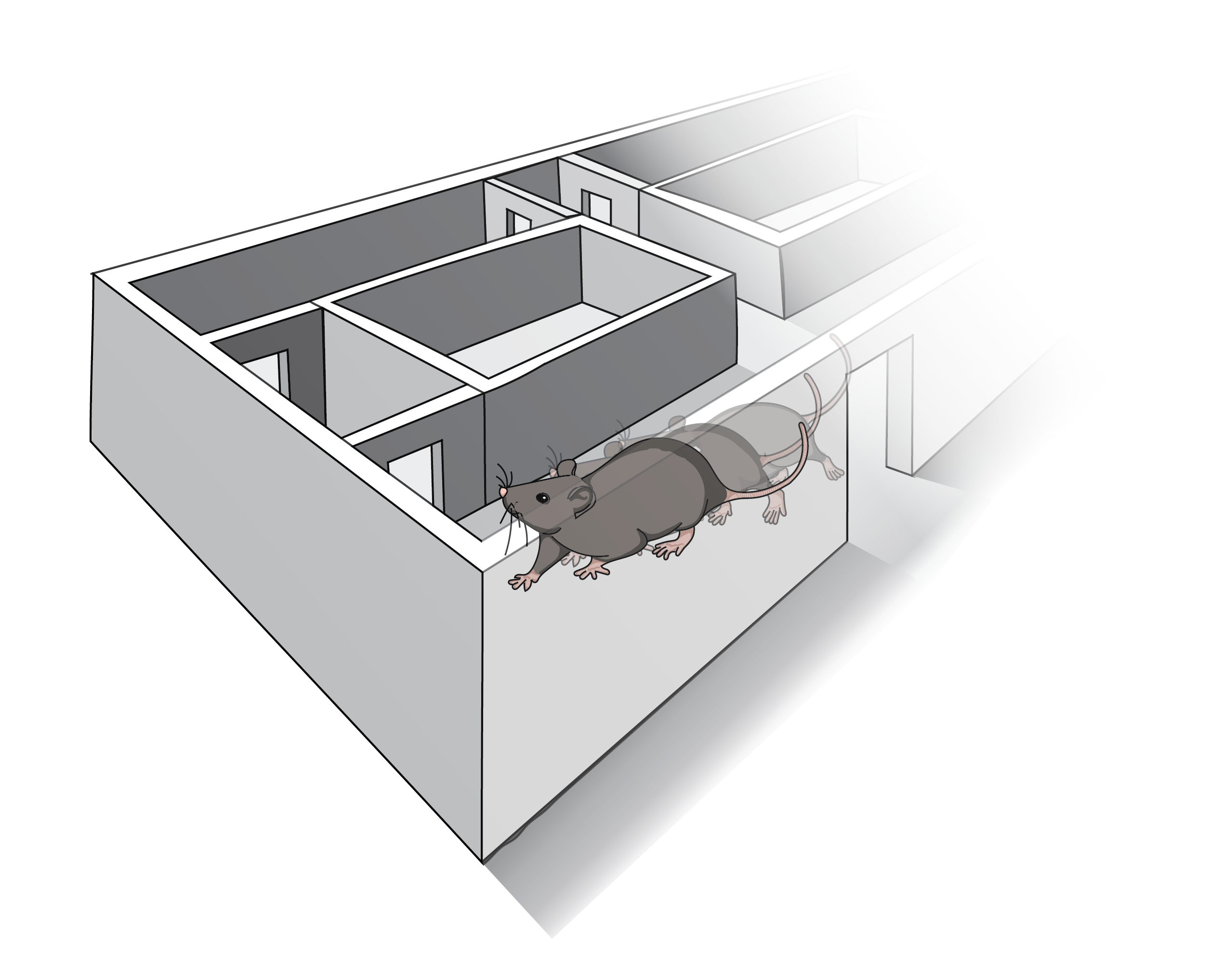
The maze was designed to leverage the natural behaviours of mice as burrowing animals, inspired by the tunnel systems they create underground in the wild to shelter from predators.
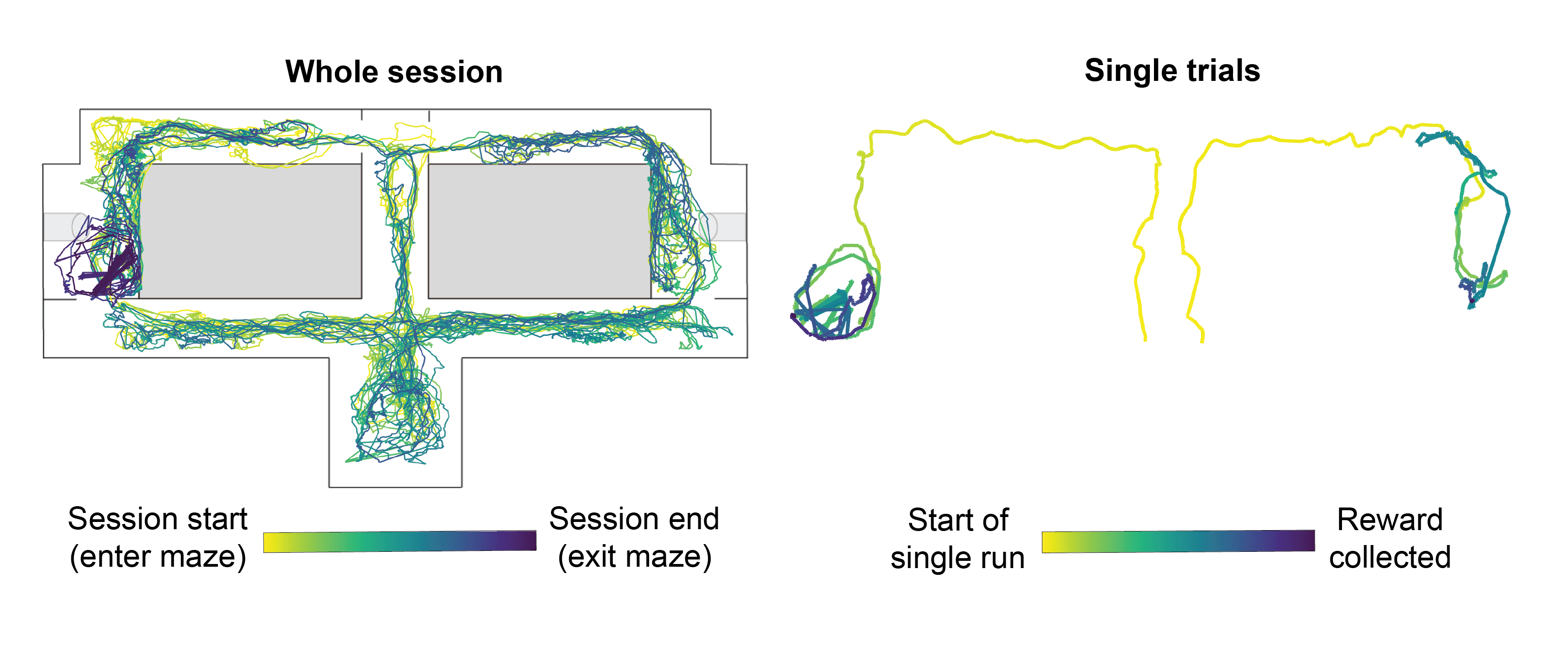
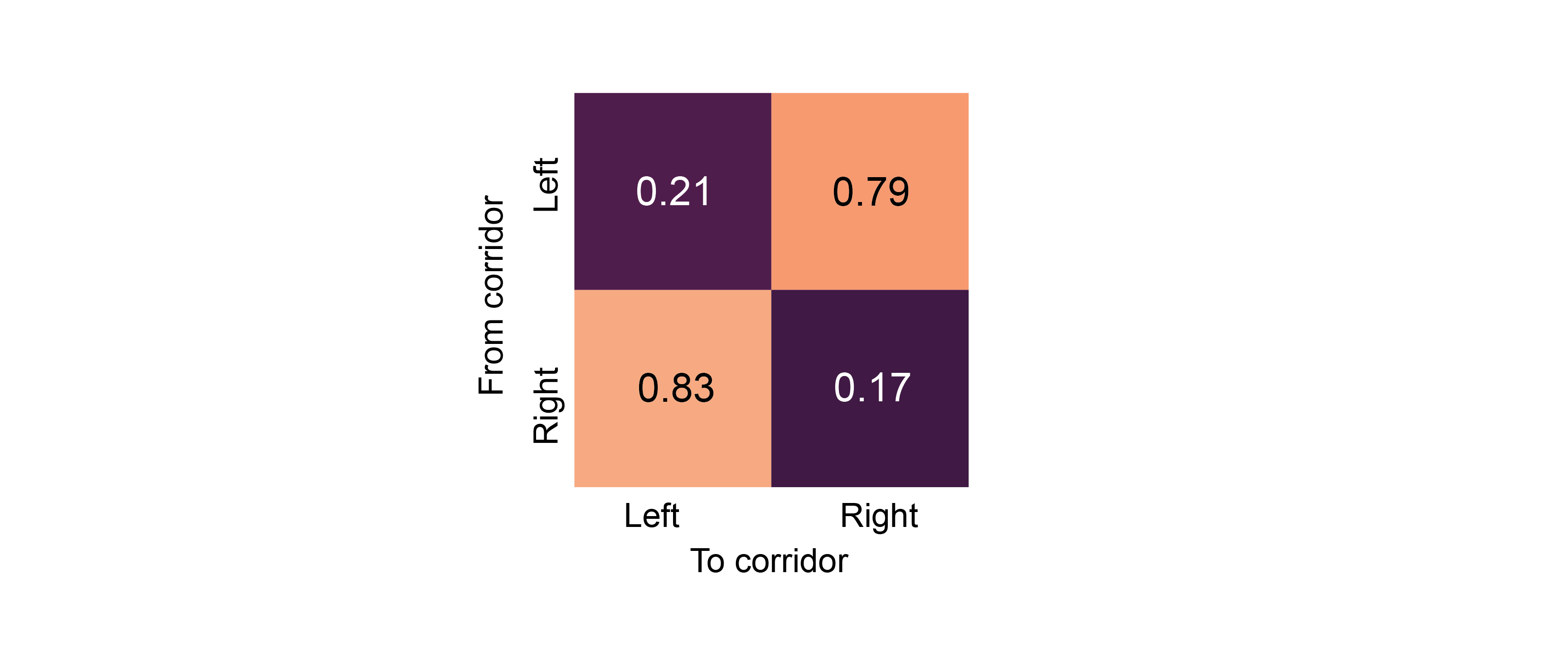
Water rewards were delivered through ports on the left or right side of the maze. This visualisation shows the mouse's movement trajectory over an entire session from a bottom-up view. On the right, a single trial highlights the mouse running from the start of the maze to a reward port.
A transition matrix shows the mice predominately alternate between drinking water from the left and right reward ports.
ROLE
Data collection, Data analysis, Data visualisation, Illustration, 3D rendering
PROJECT INFO
See the GitHub repository for this project (programming language, Python)
PhD supervisor, Liam Browne
Medical Research Council's Doctoral Training Programme in Neuroscience and Mental Health
University College London
This project is part of my PhD thesis, Somatosensory Stimulation during Exploration: An Approach to Studying How Pain is Embedded within Complex Behaviour. You can read the full thesis here—if you're so inclined